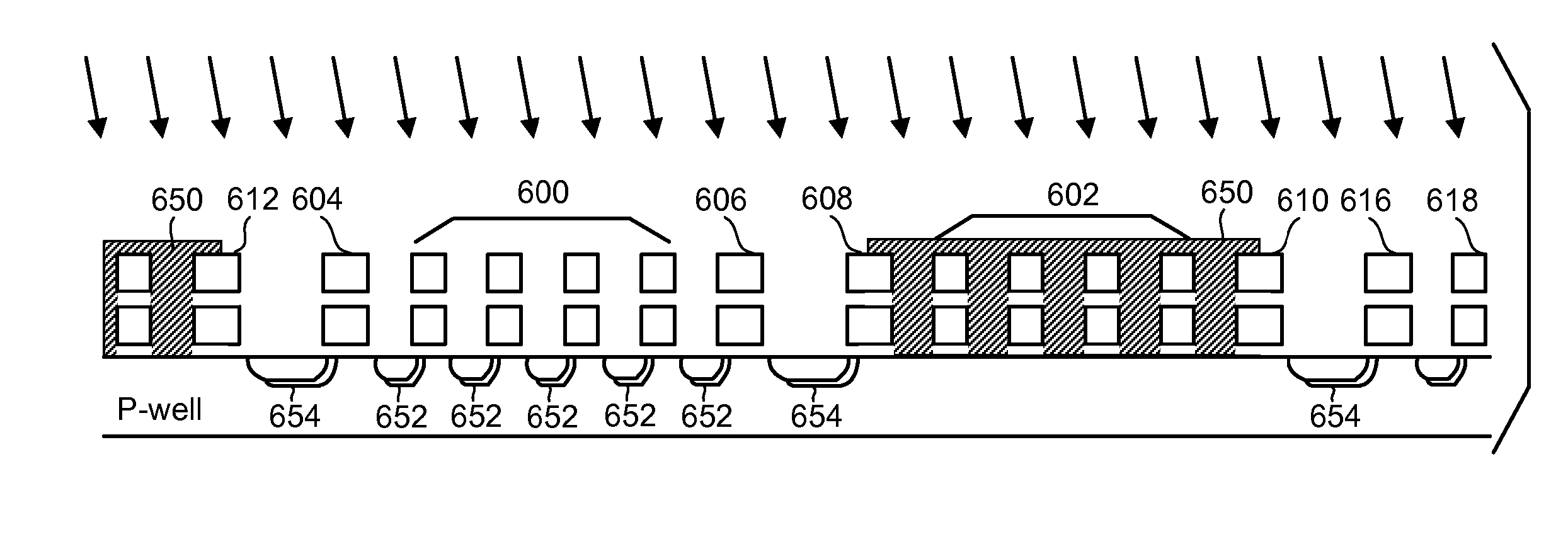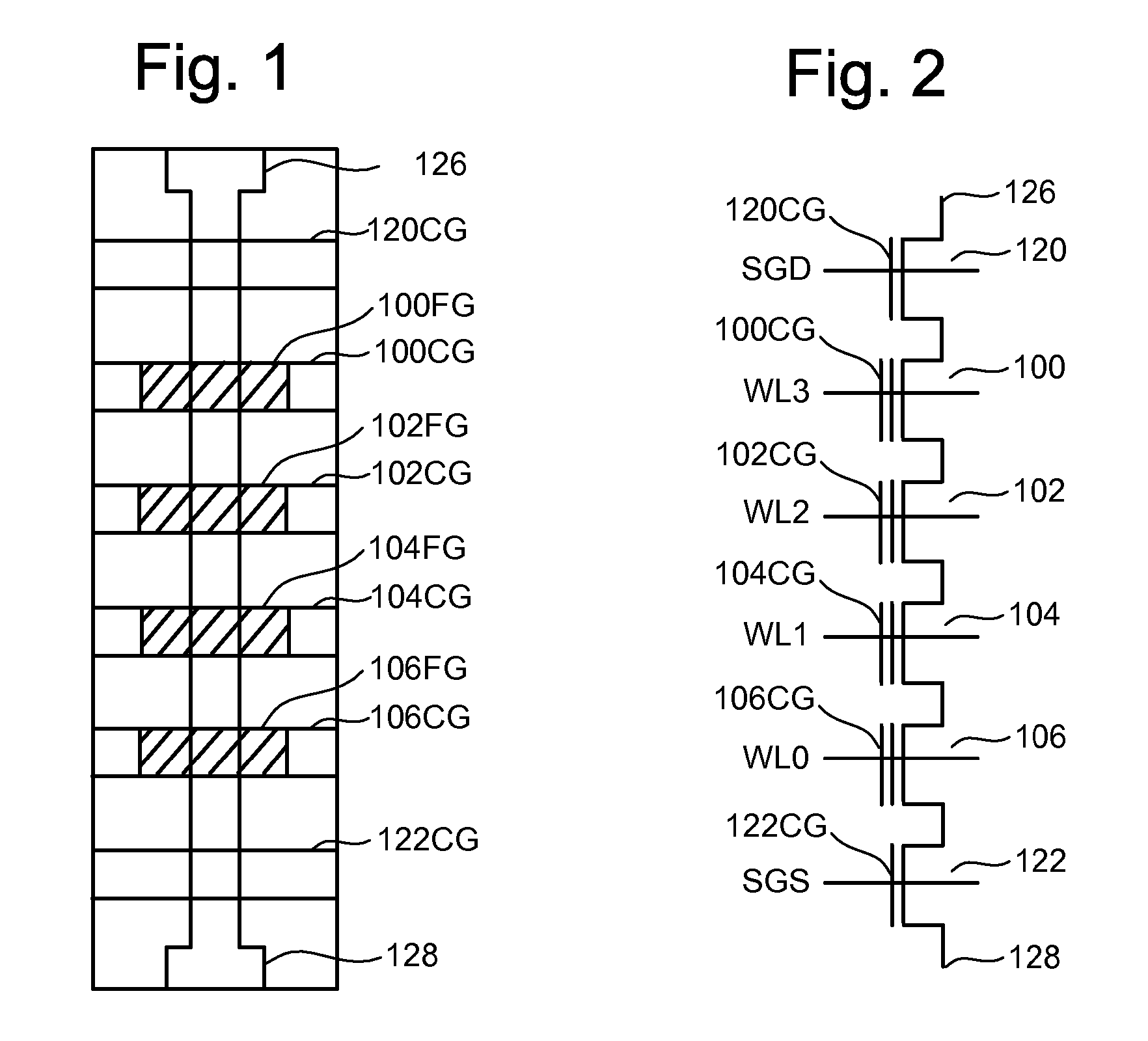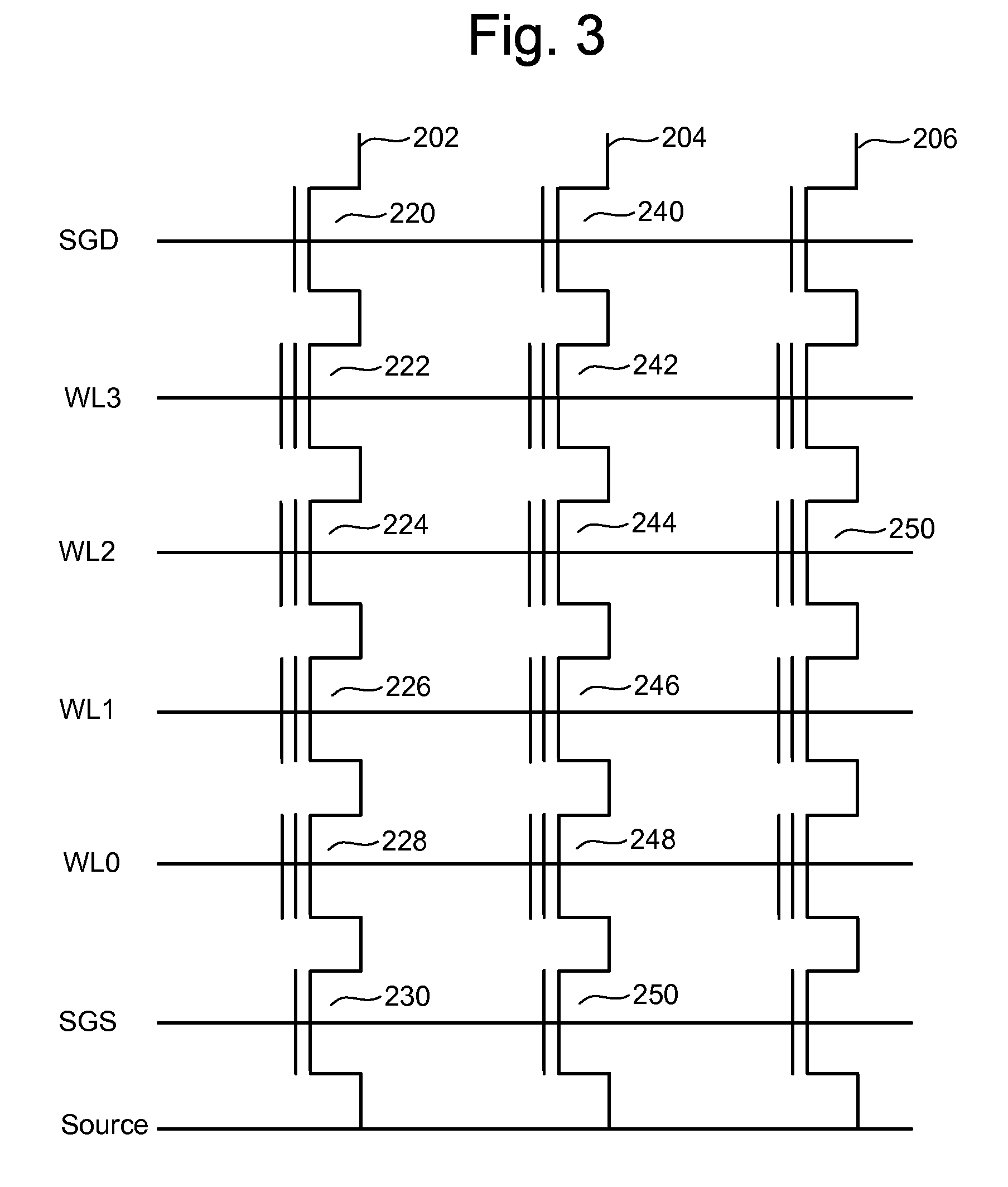Non-volatile memory with asymmetrical doping profile
a technology of asymmetric doping and non-volatile memory, applied in the direction of electrical devices, semiconductor devices, instruments, etc., can solve the problems of reducing boosting potential, unselected memory cells, and inadvertent programming of same word lines, so as to reduce the short channel effect, shorten the channel, and induce the effect of boosting
- Summary
- Abstract
- Description
- Claims
- Application Information
AI Technical Summary
Benefits of technology
Problems solved by technology
Method used
Image
Examples
Embodiment Construction
[0056] Scaling of the memory cell dimensions is possible while not necessarily degrading the boosting induced drain leakage behavior of the memory cell by using an asymmetrical memory cell doping profile in which the source side and the drain side of the memory cells are doped differently, and / or the channel is doped asymmetrical. FIGS. 8A-E provide a number of embodiments of such a memory cell.
[0057] The structure of FIGS. 8A-E includes a P-type substrate (e.g., Silicon), an N-well within the substrate and a P-well within the N-well (all of which are not depicted to make the drawings more readable). Note that the P-well may contain a so called channel implantation that is usually a P-type implantation that determines or helps to determine the threshold voltage and other characteristics of the memory cells. FIGS. 8A-E show three stacked gate structures 480A, 480B and 480C that are formed on the top surface of the P-well. The stacked gate structures are part of a NAND string. The st...
PUM
 Login to View More
Login to View More Abstract
Description
Claims
Application Information
 Login to View More
Login to View More - R&D
- Intellectual Property
- Life Sciences
- Materials
- Tech Scout
- Unparalleled Data Quality
- Higher Quality Content
- 60% Fewer Hallucinations
Browse by: Latest US Patents, China's latest patents, Technical Efficacy Thesaurus, Application Domain, Technology Topic, Popular Technical Reports.
© 2025 PatSnap. All rights reserved.Legal|Privacy policy|Modern Slavery Act Transparency Statement|Sitemap|About US| Contact US: help@patsnap.com



